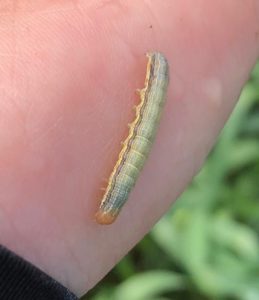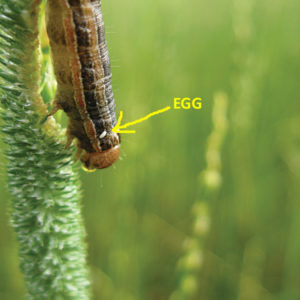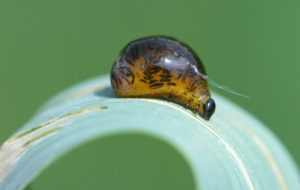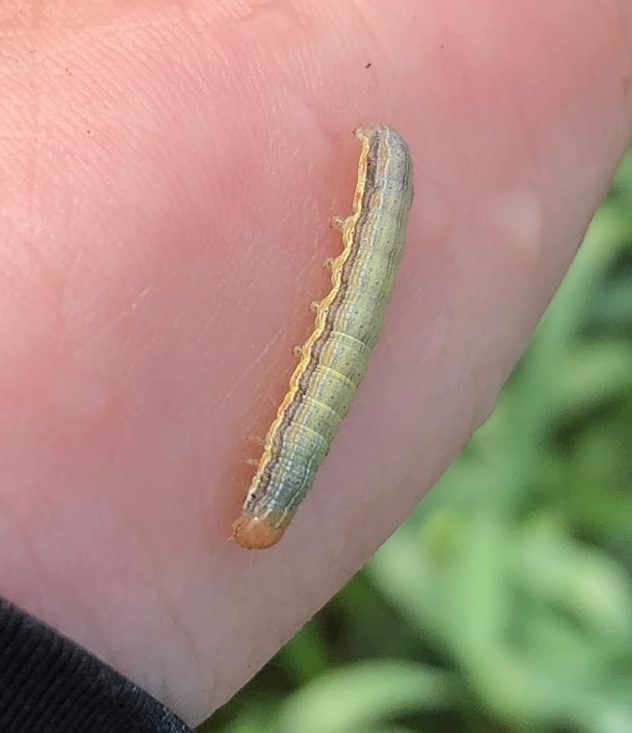This article was written by Tracey Baute, Entomologist- Field Crops and Joanna Follings, Cereals Specialist
As we continue to scout our cereal crops, reports of cereal leaf beetle and true armyworm in fields are coming in. While most fields are not being found at threshold yet, it is important to monitor your fields and be on the lookout.
True Armyworm
To date, true armyworm (Figure 1) has been reported in small, single patches in cereal fields in Grey, Bruce and Simcoe counties. It has also been reported in Middlesex, Lambton, Elgin, Oxford, Perth, Haldimand, Brant, and Niagara counties where thresholds have been met and required control. Those crops that are at most risk include cereals, corn and mixed forages and should be scouted every three to four days over the next month. A detailed overview on identification of true armyworm can be found here.

When scouting for true armyworm, the best time to scout is shortly after dusk when larvae are actively feeding. When scouting fields ensure you are walking the entire field and looking at 10 different areas of the field. Count the number of larvae per square foot (30 cm x 30 cm) in each of those 10 areas. Ensure you are also checking the border area directly beside other grassy host crops. If it is cloudy and overcast during the day, you may see the larvae on the head of the plant. If it is a sunny day they will be down on the ground among crop debris or under soil clods. Brown frass may also be present on the plants and on the soil surface.
Always take the time to look for any white eggs that may be attached to the backs of the armyworm larvae (Figure 2). This is a sign that the larvae have been parasitized by one of its parasites which have done the job for you. Avoid treating with insecticides when large numbers of parasitized larvae are present.

If there are 4 to 5 un-parasitized larvae per square foot and the larvae are smaller than 2.5 cm control may be warranted. If a significant amount of wheat head clipping is occurring, spray may be warranted if larvae are still actively feeding, are smaller than 2.5 cm and as long as pre-harvest intervals have not been reached. If larvae are over 2.5 cm (1 in.) long, insecticides will not provide adequate control.
Cereal Leaf Beetle
Infestations requiring control to date have been reported in Grey and Simcoe counties; however, most CLB (Figure 3) sightings have been below threshold and have been scattered across midwestern and southern Ontario. CLB is being found in both winter and spring cereal crops. If you are finding it in winter wheat, one CLB adult or larvae per stem warrants control after boot but prior to heading. Or if significant feeding is found on the flag leaf in early heading stages control may be warranted if they are still actively feeding. If you are finding CLB in spring cereals, the threshold is an average of three larvae per tiller before boot stage. A more detailed description of CLB identification and staging can be found here.

For more information on these pests and control products, refer to the Agronomy Guide for Field Crops and the Field Crop Protection Guide.

Comments are closed.